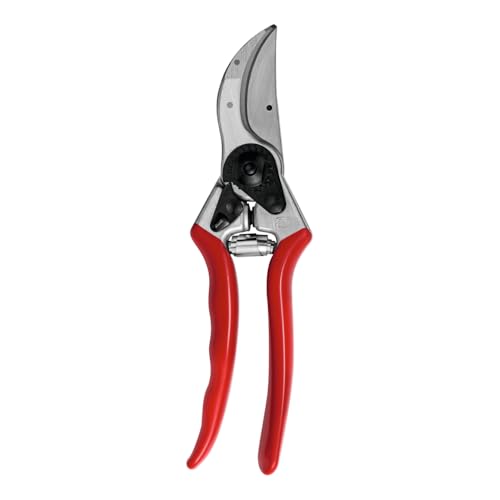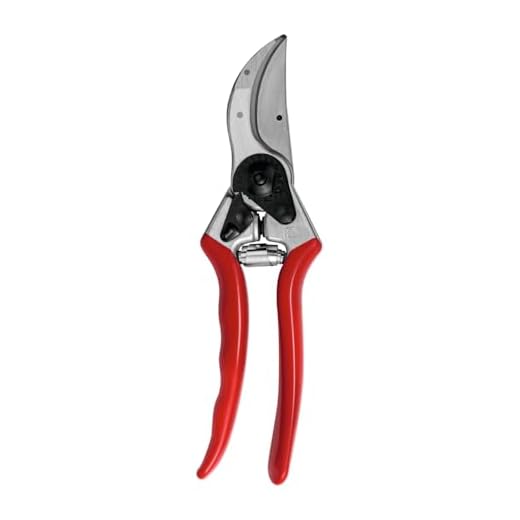




If you have a bonsai buxus, also known as a boxwood, you already know that it requires regular pruning to maintain its desired shape. Pruning is not only important for the aesthetic appeal of your bonsai buxus, but it also promotes healthy growth and prevents the plant from becoming overgrown. Proper pruning techniques will help you achieve a beautiful and well-maintained bonsai buxus.
1. Timing: Pruning your bonsai buxus should be done at the right time to ensure optimal growth. The best time to prune is during early spring, just before new growth begins. This allows the plant enough time to recover from the pruning and promotes vigorous growth during the growing season. Avoid pruning during extreme weather conditions, such as freezing temperatures or excessive heat, as this can cause stress to the plant and inhibit its ability to recover.
2. Tools: To prune your bonsai buxus effectively, you will need a few essential tools. These include sharp pruning shears, a pair of bonsai wire cutters, and concave cutters. Pruning shears are used to trim small branches and foliage, while bonsai wire cutters are ideal for cutting wires without damaging the branches. Concave cutters are designed to remove larger branches with precision, leaving a clean cut.
3. Technique: When pruning your bonsai buxus, it’s essential to follow the right technique. Start by removing any dead or damaged branches, as these can compromise the health and appearance of your bonsai buxus. Then, selectively trim back branches that are growing too quickly or are becoming too long. This will help you maintain the desired shape and size of your bonsai buxus. Always prune back to a bud or a branch to promote new growth.
Remember to step back frequently to assess the overall shape and symmetry of your bonsai buxus as you prune. This will help you achieve a balanced and aesthetically pleasing result. Additionally, regular pruning should be accompanied by proper watering, fertilizing, and exposure to sunlight to ensure the overall health and vitality of your bonsai buxus.
Why Pruning is Important for Bonsai Buxus
Bonsai buxus, also known as boxwood bonsai, is a popular choice among bonsai enthusiasts due to its dense foliage and ability to withstand pruning. Pruning plays a crucial role in bonsai cultivation as it helps maintain the desired shape and size of the tree while promoting overall health and aesthetic appeal.
Promotes Growth and Vigor
Regular pruning of bonsai buxus stimulates new growth and helps maintain the tree’s overall vigor. By selectively removing unwanted branches and foliage, you create space for fresh buds to develop, which in turn leads to a denser and more compact foliage. Pruning also encourages the growth of smaller and finer twigs, which is highly desirable in bonsai cultivation.
Shapes the Tree
Pruning is essential for shaping the bonsai into the desired form. By carefully removing branches and foliage, you can create an elegant and balanced silhouette, mimicking the aesthetics of mature trees found in nature. This artistic aspect of bonsai cultivation allows you to express your creativity and create a unique tree that reflects your personal style.
When pruning bonsai buxus, it is important to consider the tree’s natural growth pattern and the desired style. By removing branches strategically, you can enhance the tree’s natural features or create the illusion of age.
| Benefits of Pruning for Bonsai Buxus |
|---|
| 1. Stimulates new growth |
| 2. Maintains overall vigor |
| 3. Shapes the tree’s form |
| 4. Encourages denser foliage |
| 5. Enhances the tree’s natural features |
In conclusion, pruning is an essential technique in bonsai cultivation, especially for bonsai buxus. It promotes growth, shapes the tree, and helps create the desired aesthetics. Through careful and selective pruning, you can transform a simple boxwood tree into a captivating miniature masterpiece.
Maintaining Shape and Size
Pruning a bonsai buxus is essential for maintaining its shape and size. Regular pruning helps promote healthy growth and prevents the bonsai from becoming overgrown. Here are some steps you can follow to properly prune your bonsai buxus:
1. Choose the right tools
Before you start pruning, make sure you have the right tools on hand. You will need sharp pruning shears or scissors specifically designed for bonsai trees. These tools will allow you to make clean cuts without damaging the branches or leaves.
2. Consider the desired shape
Before you begin pruning, have a clear picture in mind of the desired shape and size for your bonsai buxus. This will guide you in making the right cuts and maintaining the overall form of the tree. You may also consider using wire to shape the branches, but be careful not to damage or constrict them.
3. Remove dead or damaged branches
Start by removing any dead or damaged branches. These branches not only affect the aesthetics of the bonsai but can also lead to disease and pest problems. Use your pruning shears or scissors to make a clean cut just above the collar of the branch.
4. Thin out crowded areas
Next, identify any areas of the bonsai that are crowded with branches. Thin out these areas by selectively removing some of the branches. This will allow more light and air to reach the inner parts of the tree, promoting better growth and foliage development.
5. Maintain the desired size
Regular pruning is essential for maintaining the size of your bonsai buxus. As the tree grows, it may become larger than desired. To keep it in shape, trim back the branches to the desired length. Remember to make angled cuts just above a bud or leaf to encourage new growth.
Following these steps will help you maintain the shape and size of your bonsai buxus. Regular pruning, along with proper watering and fertilization, will ensure the health and beauty of your bonsai tree for years to come.
Promoting New Growth
Pruning is a crucial part of maintaining a healthy and beautiful bonsai buxus tree. It helps to control the size, shape, and density of the foliage, as well as promote new growth. Here are some tips to help you promote new growth through proper pruning techniques:
1. Timing is Key
It’s important to prune your bonsai buxus tree at the right time to encourage new growth. The best time to prune is during the late winter or early spring, before the new growth begins. This allows the tree to focus its energy on producing new shoots and branches.
2. Use the Right Tools
Using the right tools is essential for proper pruning. Make sure to have a sharp pair of pruning shears or scissors that are specifically designed for bonsai. This will ensure clean cuts and minimize damage to the tree.
3. Remove Dead, Diseased, or Damaged Branches
Inspect your bonsai buxus tree regularly and remove any dead, diseased, or damaged branches. These branches not only affect the overall appearance of the tree but can also detract from new growth. Removing them will allow the tree to allocate its resources to healthy branches and stimulate new growth.
4. Thin Out Dense Foliage
If your bonsai buxus tree has dense foliage, it’s important to thin it out to promote new growth. Use your shears or scissors to selectively remove some of the leaves and branches, focusing on areas where the foliage is too thick. This will open up the tree, allowing more light and air circulation, which promotes new growth.
5. Pinch Back New Shoots
When new shoots begin to grow, you can encourage more compact and bushy growth by pinching them back. Using your fingers or bonsai pruning shears, carefully pinch off the tips of the new shoots. This will redirect the tree’s energy to the remaining buds and encourage branching, resulting in a fuller and more compact bonsai tree.
Remember, pruning takes time and practice to master. Don’t be afraid to experiment and make adjustments as needed. With proper care and attention, your bonsai buxus tree will thrive and reward you with a beautiful display of new growth.
Improving Air Circulation
Proper air circulation is crucial for the health and well-being of your bonsai buxus. It helps prevent the buildup of humidity and diseases while promoting the exchange of gases and nutrients.
To improve air circulation around your bonsai buxus, follow these tips:
1. Prune for Openness
Regular pruning is essential to maintain an open structure and allow air to freely flow through the branches and foliage. Remove any dense or overcrowded growth that blocks air movement. Focus on thinning out the middle and lower sections of the bonsai, creating a more airy and balanced appearance.
2. Positioning
Avoid placing your bonsai buxus in areas with stagnant air, such as corners or closed-off spaces. Instead, choose a location with good ventilation, preferably near an open window or a patio. This helps ensure fresh air constantly circulates around your bonsai.
By implementing these tips, you can significantly improve the air circulation around your bonsai buxus, enhancing its overall health and vigor.
Enhancing Aesthetic Appeal
Pruning is not only important for maintaining the health and shape of your bonsai buxus, but it also plays a significant role in enhancing its aesthetic appeal. By following some simple techniques and guidelines, you can make your bonsai buxus look more attractive and visually pleasing.
1. Shape and Form: Regular pruning helps in maintaining the desired shape and form of the bonsai buxus. By removing excess growth and shaping the branches, you can create a balanced and harmonious design.
2. Density: Pruning can also enhance the density of foliage in your bonsai buxus. By selectively removing certain branches or foliage, you can create a more full and lush appearance.
3. Proportions: A well-pruned bonsai buxus should have balanced proportions. This can be achieved by trimming back long branches and promoting the growth of shorter ones, thereby achieving a more compact and visually appealing look.
4. Clean Lines: Pruning helps in creating clean and defined lines in your bonsai buxus. By trimming away any unwanted growth or branches that disrupt the overall design, you can achieve a more refined and elegant appearance.
5. Trunk and Branch Structure: Pruning can also help in emphasizing the natural beauty of the trunk and branch structure of your bonsai buxus. By selectively pruning and shaping the branches, you can highlight the unique features and create a more visually interesting bonsai.
Remember to always use sharp and clean tools when pruning your bonsai buxus to avoid any damage or infection. It is also important to consider the specific needs and growth patterns of your bonsai buxus when pruning to ensure the best results.









